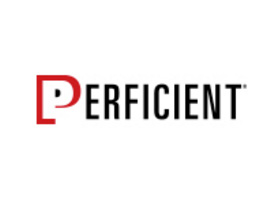CMS interoperability rules generated quite the commotion in healthcare this past year. But when you think about it, these mandates are pushing us closer toward the consumer-centric goals that healthcare organizations already aim to prioritize. Interoperability Mandates Mirror Business Needs Rules and Regulations. Regulations like the CMS Final Rule mandate that health care organizations make […]
Posts Tagged ‘HL7’
[Podcast] Healthcare Data is Changing Consumer Care
Healthcare leaders have access to more healthcare data and technology than ever before allowing them to transform patient and member care. A one-size-fits-all-approach doesn’t work anymore and we’re being challenged to do more through personalized medicine. In season 1 episode 2 of the Intelligent Data Podcast, host Arvind Murali and his guest Juliet Silver, Perficient’s […]
An Easy Way to Write HL7(TDS) Messages in XML Format in IIB
The Perficient project lead handling an Enterprise Integration project at one of the largest healthcare providers in the country called me one afternoon and asked me to find a quick solution to write HL7 messages in XML format as some vendors that were being integrated needed the messages in XML. I knew that the solution […]
APIs in Healthcare: Increase the Value of Health Data
CHALLENGES MAKING MASSIVE AMOUNTS OF DATA MEANINGFUL Healthcare data requires high security – but that can also lead to difficulty in sharing information when needed. Interoperability of healthcare data requires a modernized infrastructure to enhance communication and access. With restrictive formats like EDI and HL7, along with the unstructured data generated by wearables and devices, providers and health plans have […]
What Are The Implications Of Not Complying With E2B(R3)?
In the European Union, the use of E2B(R3), along with IDMP, is in legislation, so not complying by the deadline could have legal repercussions. Non-compliance with the FDA and MHLW’s requirements could also bring unwanted scrutiny. More importantly, if an organization does not comply by the deadlines, they will not be able to send ICSRs […]
Do Commercially Available Safety Systems Comply With E2B(R3)?
Yes, some validated systems can comply with E2B(R3). With respect to Oracle Argus Safety, the current version, 8.0.1, is able to comply with E2B(R3), Electronic Vaccine Adverse Event Reporting System (eVAERS), and Electronic Medical Device Reporting (eMDR) reporting requirements. If a company is simply looking to meet E2B(R3) requirements, we advise waiting to upgrade until […]
Does E2B(R3) Impact Companies With No Safety Reporting System?
The issue is not the type of system used to collect adverse event data, but rather how the data is submitted to the FDA, EMA, and MHLW. If an organization is using spreadsheets to collect safety data or is unable to transmit data via E2B, it will have to report the data via a web-based […]
What Is The Pathway To E2B(R3) Compliance?
Companies who are currently submitting reports using the E2B(2) format should already be planning the move to E2B(R3). If a robust safety and pharmacovigilance system is already in place, there are likely just a handful of technical changes that need to be made in order to meet the new regulations. For example, system configuration changes […]
When Do Companies Have To Begin Complying With E2B(R3)?
In the United States, if a company is transmitting vaccine or device information to the FDA, it should already be reporting in E2B(R3) format. For companies reporting solely to the FDA Adverse Event Reporting System (FAERS), no official deadlines have been published. In Europe, drug companies who report to the EMA will need to comply with […]
How Does E2B(R3) Affect Companies With Global Operations?
Currently, two of the FDA branches have released guidance documents and have implemented a form of E2B(R3). Center for Biologics Evaluation and Research (CBER) has released “Providing Submissions in Electronic Format — Postmarketing Safety Reports for Vaccines” and the Center for Devices and Radiological Health (CDRH) has released “Technical Information on eMDR.” While both of […]
What Is The Difference Between E2B(R2) And E2B(R3)?
After the release of E2B(R2), the ICH realized that technical specifications should no longer be developed in isolation. E2B(R3) is the first technical specification to be developed through a new collaborative approach. E2B(R2) Vs E2B(R3): Regulation and Interoperability The International Organization for Standards (ISO), Health Level Seven International (HL7), and European Committee for Standardization (CEN) […]
What Is E2B(R3)?
E2B(R3) doesn’t have a direct translation. The International Conference on Harmonisation of Technical Requirements for Registration of Pharmaceuticals for Human Use (ICH) published guidelines that have designated “E” to stand for efficacy. The work carried out by ICH under the efficacy heading relates to the design, conduct, safety, and reporting of clinical trials. It also […]



